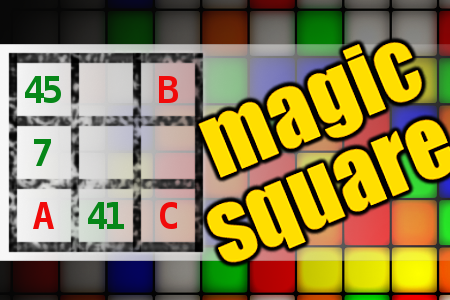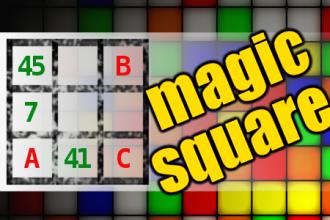MAGIC SQUARE: Calculate A*B*C
The aim is to place the some numbers from the list (7, 9, 11, 26, 28, 30, 41, 43, 45, 62) into the empty squares and squares marked with A, B an C. Sum of each row and column should be equal. All the numbers of the magic square must be different. Find values for A, B, and C. Solution is A*B*C.
You gotta have faith
A couple of nuns who were nursing sisters had gone out to the country to minister to an outpatient. On the way back they were a few miles from home when they ran out of gas. They were standing beside their car on the shoulder when a truck approached.
Seeing ladies of the cloth in distress, the driver stopped to offer his help. The nuns explained they needed some gas. The driver of the truck said he would gladly drain some from his tank but he didnt have a bucket or can.
One of the nuns dug out a clean bedpan and asked the driver if he could use it. He said yes and proceeded to drain a couple of quarts of gas into the pan. He waved goodbye to the nuns and left.The nuns were carefully pouring the precious fluid into their gas tank when the highway patrol came by.
The trooper stopped and watched for a minute, then he said: "Sisters, I dont think it will work, but you sure have faith!"

